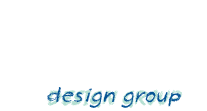A recent study of eye tracking on product packaging indicates that customers are spending fractions of seconds reading labels and making buying decisions. In many cases, as little as 1/20 of a second is spent on eyeing packaging.
We have also learned from recent studies that nutrition labels have little impact. Many of your most compelling nutrition facts, such as low sugar or vitamin content, is presented near the bottom of a nutrition table and therefore overlooked by customers. Given that busy customers are not reading nutrition and packaging narratives, getting packing design right is mission critical.
As an outsourced chief marketing officer working with food and beverage clients, I am often called on to help design packaging and plan the go-to-market strategy for new and/or struggling products. I recently had the pleasure to work on the design for a line of kombucha beverages. Kombucha is a fermented tea sold in most grocery stores as a ready-to-drink product. It is praised for its health and digestive benefits.
In this product category, one dominant brand has 80 percent of market share, and the category is growing quickly with many new customers trying the product every day. My challenge was to help my client design packaging that would appeal to new customers while also enticing the leading brand's regular customers to try something different. We started where all packaging projects should start, with research.
I set out to build a customer profile of a typical kombucha drinker. We asked for vital lifestyle data as well as factors that drove the brand decision process. These included things such as age, income, gender and education levels as well as health behaviors and lifestyle. I had a theory that if we could capture the health benefits of kombucha in the packaging they would sell like crazy. I was dead wrong.
In fact this assumption could have ruined the packaging if I had acted on it without soliciting customer input. In our discussions with customers, what I learned was that taste, not perceived health benefits, were the deciding factor when selecting a brand. It turns out, kombucha drinkers have already accepted the many health benefits. They don’t need to be sold. What they want to know most is what this particular bottle is going to taste like.
My client’s product was saved by the research. My team and I avoided a costly mistake. Starting the packaging design with a strong assumption is common error, made most often when a company designs product packaging without an outside perspective. Without this due diligence we might have put the wrong facts on the packaging.
Our well designed survey helped. A poorly design survey could have simply confirmed my bias and led us down the wrong path. An outside team will have fewer biases and more experience eliciting valid and useful customer feedback. If you are not sure if you are asking the right questions in your research, look for outside advice.
6 steps you can follow when designing new product packaging:
- Determine where your product is in the category’s evolution. This will help determine the strategy and impact how much time the customers will spend learning about your product.
- Build a customer profile by gathering voluntary information from your customers and engaging in customers in active feedback. There is some basic information that you need such as, age, gender, ethnicity, income ranges, education levels and geographic location. Other questions will need to be customized based on what the product is.
- Determine what motivates buying preferences. If this is a new food category, many customers will read the labels and nutrition information, but only for fractions of seconds. If this is a mature category, expect customers to spend even less time reading packaging or nutrition information.
- Determine your top three buyer motivating factors and use them front-and-center on your packaging. Remember, you have fractions of a second to make an impression.
- Work with the best design firm you can find. Once you sort through the first four steps, you are way ahead of most companies trying to bring a product to market, especially if you have avoided your own biases. Now you need an amazing designer to translate those facts into a design that connects with customers and conveys the critical information in less than a second. Your designer speaks the language of the subconscious. Trust her. She is translating knowledge into a language you don’t speak.
- If you are a small to mid-sized company with a more limited product launch budget, work with a design firm to develop the most compelling packaging you can. Plan your go-to-market strategy and launch it. If done well, new packaging should give you a sales lift out of the gate.
Optional: If you have the budget, I suggest testing the new packaging with consumers using the latest eye tracking technology and comparing this to tests of your competitors' packaging. In doing this, you will have some certainty that your product will gain market share.

Bemis earned a Silver Award in the 2017 DuPont Awards for Packaging Innovation for its work on Kellogg’s Nutri-Grain Bakery Delights packaging. The product uses textured film to represent a bakery treat that looks like it's wrapped in kraft paper and twine. To uniquely capture the attention of millennial shoppers, the package is designed to look like paper, feel like paper, and even crinkle and crunch like paper.
Original article on Food Processing.
